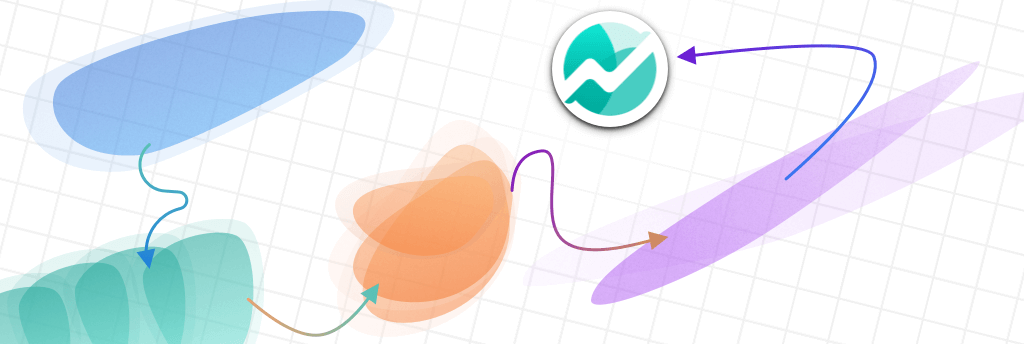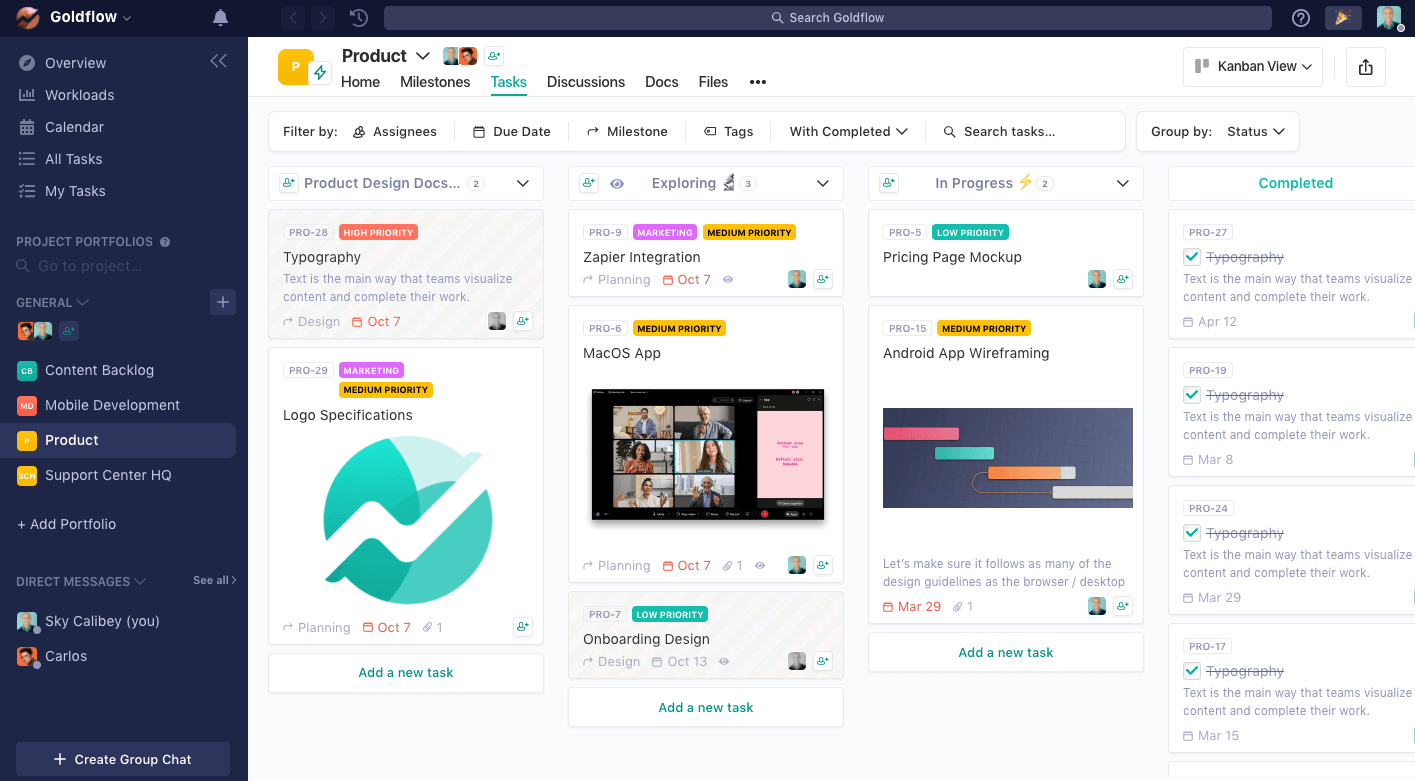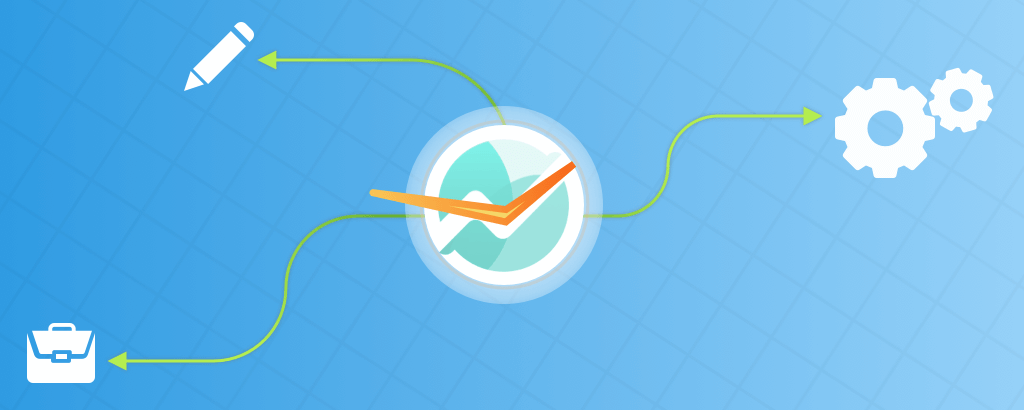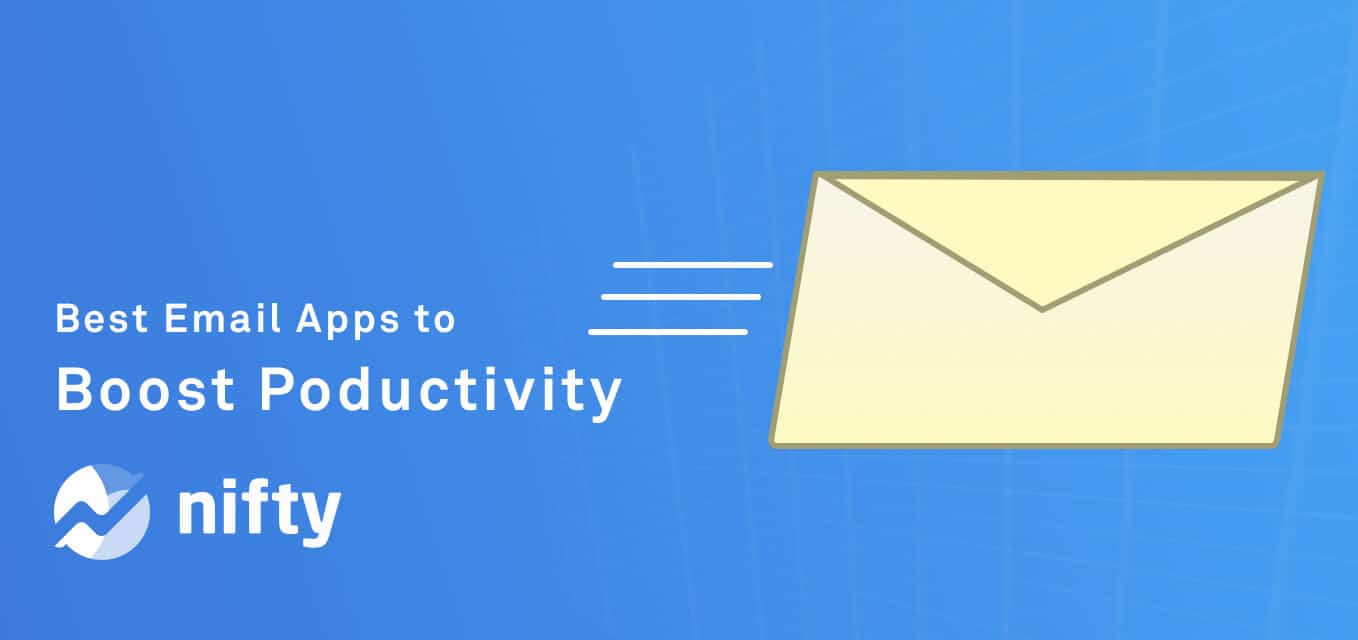
At first glance, creative project managers in project management might seem like an oxymoron.
After all, shouldn’t we promote the free flow of ideas without trying to add potentially limiting structure? Creatives are the cornerstone of the world’s innovations — their inability to think outside the box and present dynamic solutions benefit any organization. However, they have a reputation for being more challenging to manage since their work is often quite individualized and reliant on inspiration.
That being said, if you take a deeper look at the combination of project management and creatives, you’ll see that project management systematically improves organization and clarity in creative environments. Many creatives are already great organizers and communicators, and creative project management provides the structure for those skills to shine.
At the center of this is the creative project manager, balancing creativity and structure to drive projects forward on time and under budget. They need to follow the creative project management process to help their teams imagine a solution and make it real.
What is a creative project manager?
A creative project manager brings together a wide array of people: stakeholders, clients, and company management, but their defining relationship is their work with creatives. Managing graphic designers, web designers, copywriters, content creators, UX designers, videographers, photographers, and more, comes with a unique set of challenges.
Projects can range from creating copy and design for a website to large-scale advertisements and video production. People in this role need to foster an environment of inspiration while honoring the creative process and still delivering projects on time.
A creative project manager’s responsibilities fall into three buckets:
- Planning and organizing: leading clients and creatives through project planning, planning budgets, and managing the scope of work.
- Communicating: serving as the primary liaison between the creative team and the client to share information around updates, handoffs, and feedback.
- Monitoring progress: Managing project timelines, workloads, and teams to keep things on track.

Creative project managers, and project managers in general, are in high demand. Over the next ten years, creative project managers anticipate job growth of 6% — faster than average- and project manager jobs are expected to increase by 33%.
When working as a creative project manager, it helps to be an idealist, motivational, and highly communicative. These three skillsets will help you build trust and strong relationships with your team. The ability to see an abstract idea and help shape it into reality, while keeping your team motivated through long processes and setbacks, is essential. You also need to be able to communicate both at a high level and in-detail depending on your audience to provide updates and drive strategy.
How do creative project managers fit in an organization or agency?
Creative project managers can work in-house or for an agency. While the core responsibilities remain the same regardless of location, there are some key differences between the two in terms of scope and focus.
If working in-house, a creative project manager has one client: the company. Within this environment, they’ll take a more narrow and specialized approach to tailor things specifically for that one organization. This helps them to develop a more robust understanding of the brand, the primary audience, and objectives.
When working at a creative agency, creative project managers are exposed to a wider breadth of clients and priorities. Because of this, they may not have the chance to integrate themselves as deeply into their objectives.
However, exposure to a wide array of design projects means that they’ll pick up new information and best practices that can help influence future projects.
Creative project managers are a necessary function in any creative agency. They determine the creative framework for completing projects, which can be broken down into a few main pieces:
- Initiating the plan and brainstorming ideas: de-mystifying the clients brief, understanding requirements, and building the right team to reach the client’s goals
- Defining deliverables: making sure that the team knows exactly what the final product is and when to deliver it
- Identifying the project stakeholders: Providing more context about who the project is impacting and who can and should weigh in and provide guidance.
- Coordinating regular team meetings and updates: sharing relevant information on a regular cadence so that everyone is on the same page; providing sufficient information for people to move forward with their tasks confidently
- Managing the timeline: ensuring that creatives don’t get carried away with the creative process and that they understand that clients have a deadline as well
- Reviewing and approving the final project: combining all of the deliverables into a final project to be shared with the client; leading the review process for any additional changes or updates; gathering client feedback and sharing that to the team to facilitate improvements
- Launching the project: sharing the project, whether online or on other media forms, to launch the campaign

Tools for a Creative Project Manager
Project management software is a must for any creative project manager. Sometimes projects need a high degree of flexibility depending on team needs, and the right software will allow all members of the team to collaborate effortlessly.
Nifty helps creative project managers move through the entire workflow seamlessly. Document collaboration, deadlines, and workloads can all be tracked in an easy-to-use interface that won’t be too technical for creatives to collaborate with. Nifty also has a team communication function, which helps teams brainstorm and track all discussions and ideas seamlessly.
Creative Project Manager vs Technical Project Manager
Creative project management tends to lean more on the conceptual side of an organization. If it’s a product company, you’ll probably find yourself amongst product managers and designers as you understand client desires and incorporate them into your product’s vision. At an agency or service organization, you’ll be working with designers, marketers, videographers, or anyone else responsible for helping the vision come to life.
This differs from Technical Project Managers who tend to be in the weeds of details, be it in a development context, or overall project management role. You’ll be focusing more on the _how_ of execution, and your problem solving will come down to creatively managing details and timelines rather than dreaming up vast overtures.
Benefits of Creative Project Managers and Creative Project Management
Those who manage creatives tend to appreciate the eccentricities of their team members. They can tell you first hand how many creatives (dare I say a majority) benefit from having someone to help them manage their workload and provide context and sequence to their tasks.
In a way, you might find that some creatives don’t mind and might even like being managed to an extent, as they know it helps them achieve their best work. Because of this, if you’re able to unlock the productivity of your creatives by adapting to how they work (and bolstering them where they could use the assistance), you’ll find yourself in a very rewarding position that’s extremely appreciated by your team.

Tips on Being an Awesome Creative Project Manager
Here are some thoughts on how best to manage your team of creatives and be an awesome creative project manager yourself:
1. It’s imperative that you get to know your team as individuals to best understand how (and to what extent) they work. This will be very handy when it comes to motivating them towards a deadline.
2. Get to know their strengths and weaknesses. You might learn that your spaceshot design (who’s very talented by the way) works best when you consolidate all of the requirements and assets for them proactively. Conversely, you might have a teammate who disappears into the woodwork, only to come back with a killer deliverable just minutes before it’s due.
3. Make your expectations clear for them from get-go. This will help creatives know what’s expected, as well as where they can depend on some leeway in their role. Getting the best out of creatives is a delicate balance of guiding them towards the deadline and solution without forcing them into a set method or schedule.
4. Be sure to recognize great work when you see it. While many creatives are intrinsically motivated, a little external validation goes a long way.
Conclusion
Project management for creative teams can be both wonderful and frustrating. However, with the right people and tools in place, creative professionals are empowered to create amazing work and the creative project manager shares in that success.
If you’re looking for a new project management software to steer your creative team forward, Nifty needs to be your number one choice. Get started today with a free trial and discover for yourself just how much it can benefit your workflows, collaboration, and efficiency.








